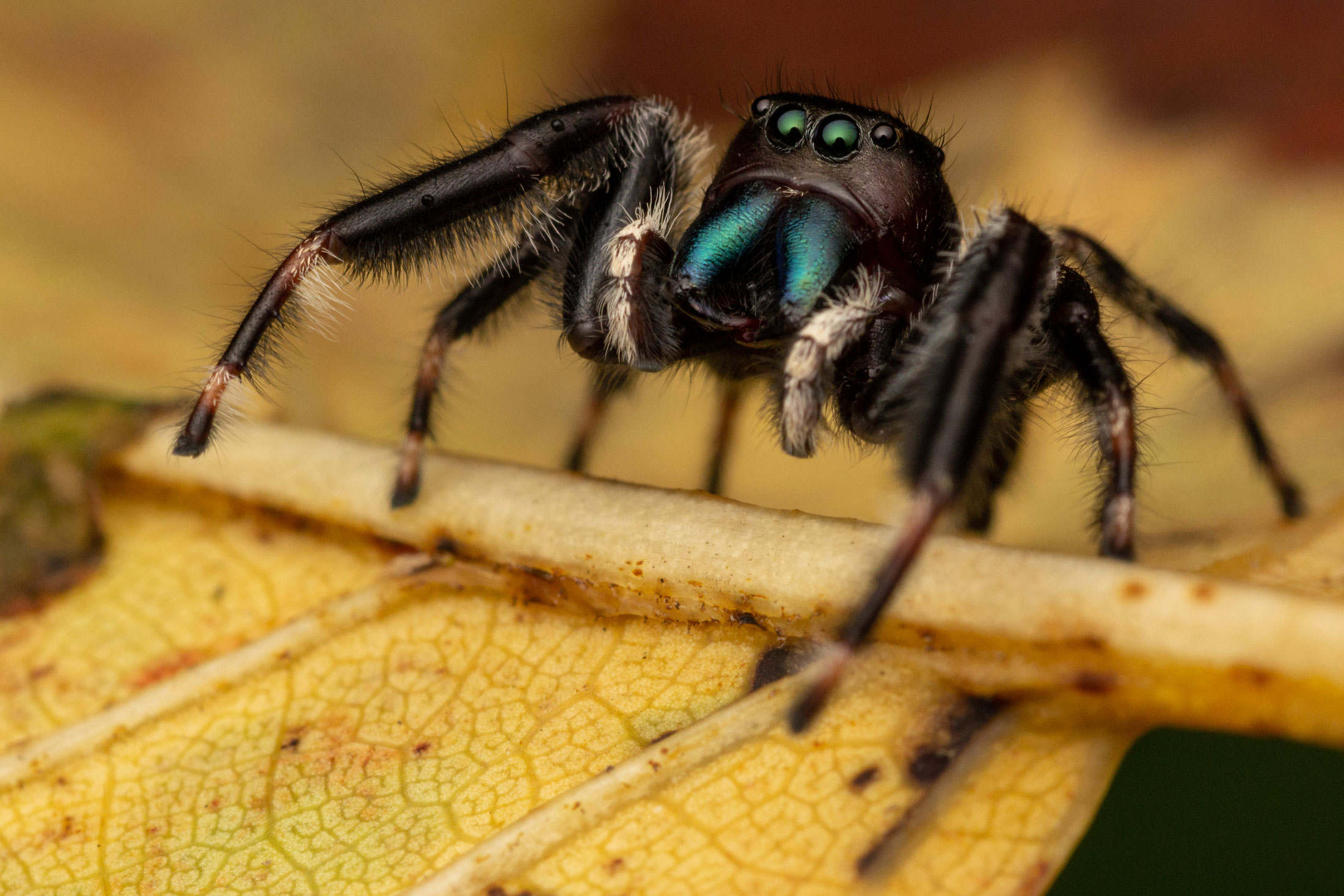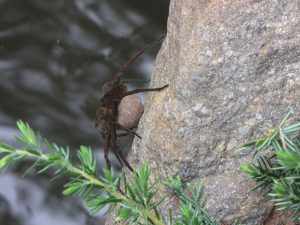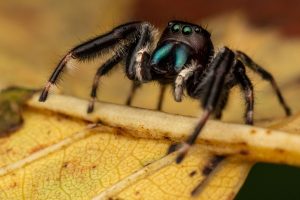
Although the word “spider” may elicit a “yuck” or an “ew” from many readers, the true nature of these oft-feared critters is not as icky as one might suppose. Arachnids provide essential services for humans and play key roles in balancing our ecosystems by keeping herbivorous insects in check.

“Without spiders we would probably succumb to some nasty insect-borne disease while waiting to starve to death,” said Kefyn Catley, who has studied the evolutionary biology of spiders on four continents and spent years teaching and conducting research as a professor of biology at Western Carolina University. Some of his work has been done in Great Smoky Mountains National Park, whose boundary is within a 45-minute drive of WCU. Researchers have thus far recorded 553 species of spiders in the park, 43 of them new to science.
Three of these species were discovered in 2023, when researchers Marshal Hedin and Marc Milne published their comprehensive study of one Appalachian spider genus: Nesticus, a group commonly referred to as the scaffold web or cave cobweb spiders. In their 130-page scientific paper tracking the evolution of the Nesticus genus, Hedin and Milne describe a total of ten spider species that were new to science—never documented before. Three of these exist in the Smokies, and they were named to honor writer Wilma Dykeman (Nesticus dykemanae), arachnologist Dr. Greta Binford (Nesticus binfordae), and the Cherokee people (Nesticus cherokeensis).
Spiders are part of a larger group of species called arthropods, which Catley—who holds a PhD in arthropod systematics from Cornell University—describes as the little and largely unseen creatures that run the world. This group of animals includes insects, crustaceans, springtails, millipedes, centipedes, and arachnids, such as spiders. All members of the arthropod phylum are invertebrates with external skeletons, segmented bodies, and jointed appendages. Over half of the species documented in the park are arthropods.

“Arthropods provide the life support systems that humans and the whole terrestrial biosphere rely on for their continued existence,” he said. “Without them it has been estimated that almost all life on land—including humans—would go extinct in nine months.”
Spiders have two main body parts and two unique characteristics: silk produced through “spinnerets” located at the tip of the abdomen, and the male “pedipalp” as an organ for transferring sperm to the female.
“Spiders have an ancient lineage originating some 400 million years ago,” Catley said. “They are the largest and most important group of predators on the planet.”
These tiny creatures regulate all our land-based ecological systems by controlling herbivorous insect populations. It is estimated that the spiders on about two acres of forest in Western North Carolina can consume 48 metric tons (105,840 pounds) of insects in a year.
“Spiders also provide us with excellent models for studying ecology, biochemistry, competition, and sexual selection, among other fields,” said Catley, who is retired but still teaches courses on spider biology and insect photography. “They contribute to research in pest control, venom chemistry, and the cloning of silk.”

Even though spiders offer all these benefits, many people are afraid of all spiders because a few have harmful bites. Catley pointed out that less than one percent of spider species are toxic to humans. These species are not poisonous; they are venomous (poison is ingested; venom is injected). Catley said the evolution of venom is one of two innovations (the other being silk) that makes spiders the hugely successful group they are. Most spiders produce venom that paralyzes their prey and starts the process of digestion by breaking down cells and tissue.
Through the brown recluse is found in other areas of this region, the only spider native to the park that—very rarely—envenomates humans is the black widow. Fortunately, like most spiders, these are shy and retiring and do not threaten humans.
Between 1979 and 1991, the United States saw 1,135 deaths attributed to lightning strikes, 591 attributed to bee stings, 72 to snake bites, and 57 to alleged spider bites—but as many as 80 percent of spider bites are wrongly diagnosed. This translates to a 20 times greater chance of being struck and killed by lightning than being killed by a spider!
“The vast majority of spiders are in fact greatly important to humans, consuming 400 to 800 million metric tons of insects per year,” said Hedin, one of the researchers who documented the new spider species. “Of course, many of these insects that spiders consume would be somehow harmful to people, consuming crops or vectoring disease. In this way, spiders are the ultimate predators of many pestiferous insects; this is what they evolved to do!”

As most everyone knows, spiders also make silks that are remarkable biomaterials, and with help from human ingenuity they may provide solutions to many of the problems we face today. Spider silks are already being used in biomedicine.
“In the end,” Hedin said, “spiders are in fact immensely beneficial to humans. Plus, they are just remarkable little animals, and often quite beautiful.”
Some spiders, like the cellar and parson varieties, live with us indoors all year round. If you protect your living space from pesticides, these constant companions will be at your service, significantly reducing your undesirable insect populations.
So, what should you do if you see a spider in your home? Catch it with a cup and postcard and put it out—or simply let it be.
Subscribe to get the latest posts sent to your email.
The Great Smokies Welcome Center is located on U.S. 321 in Townsend, TN, 2 miles from the west entrance to Great Smoky Mountains National Park. Visitors can get information about things to see and do in and around the national park and shop from a wide selection of books, gifts, and other Smokies merchandise. Daily, weekly, and annual parking tags for the national park are also available.